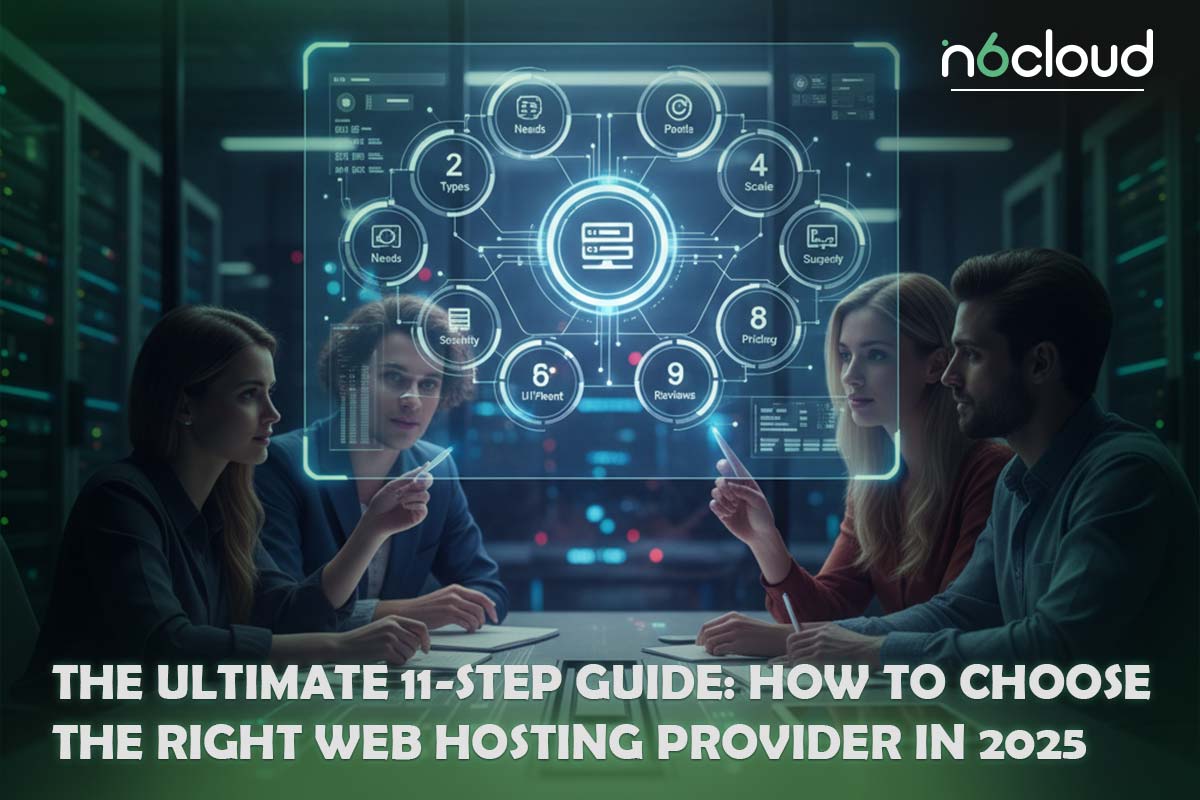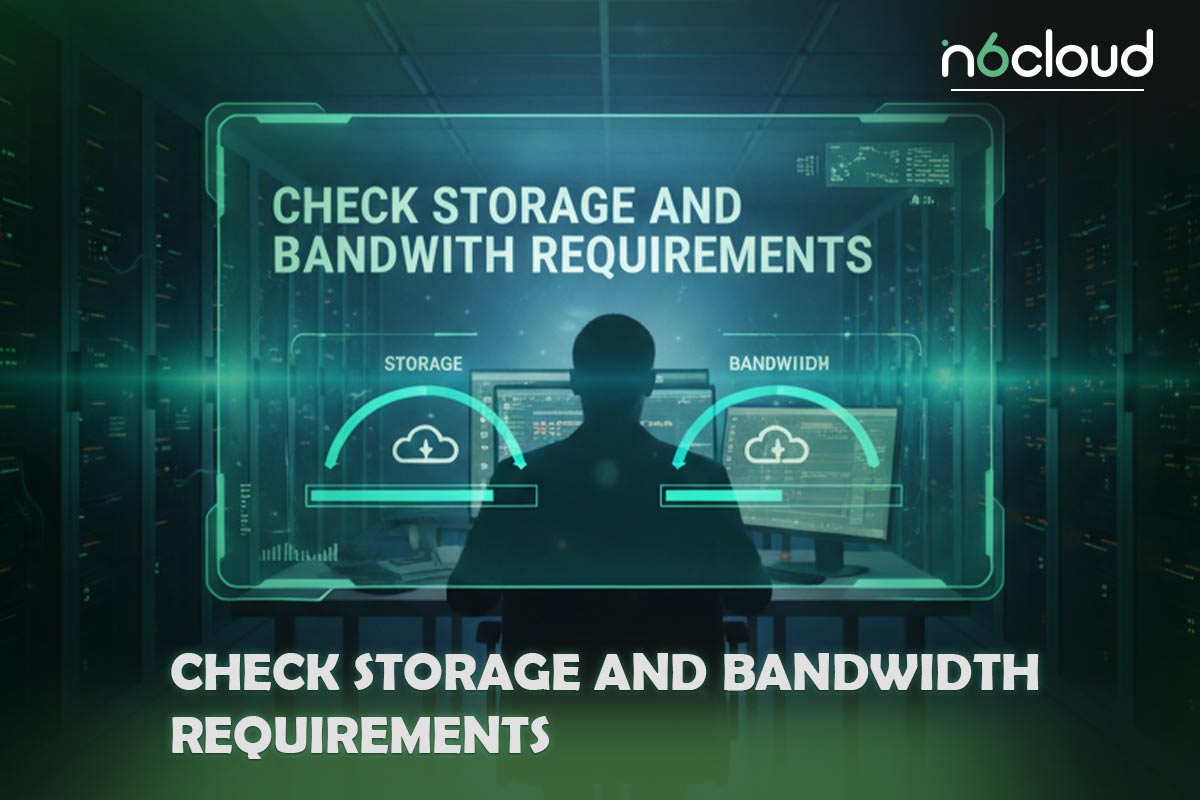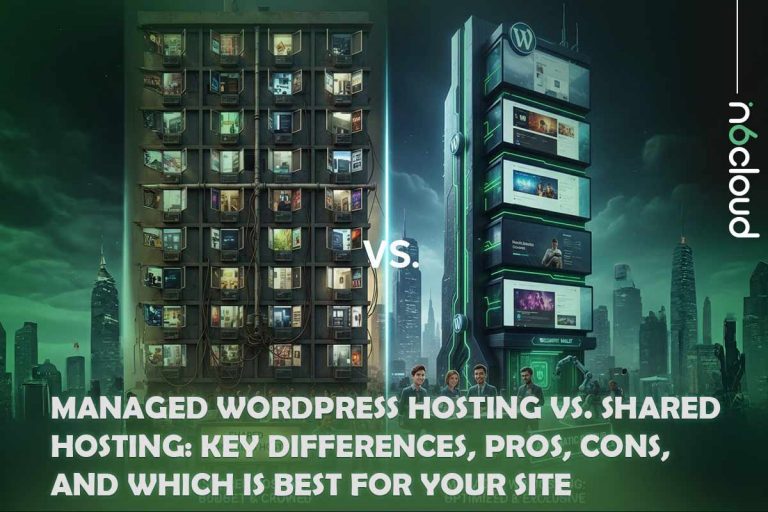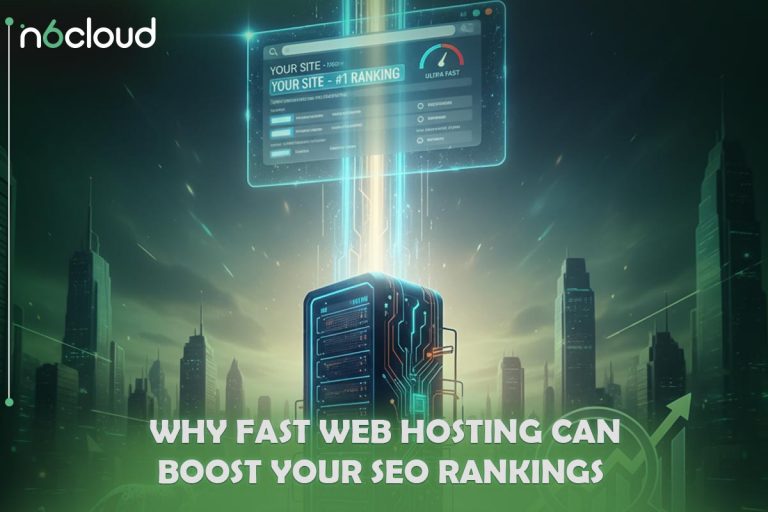Selecting the right web hosting provider is one of the most important decisions you’ll make when building a website. Whether you’re launching a personal blog, an online store, or a growing business platform, your hosting choice determines how fast your site loads, how secure it stays, and how well it performs as your audience expands.
A web hosting service is what makes your website visible to everyone on the internet. When you choose a hosting plan, you’re essentially renting space on a server that stores your website’s content and delivers it to visitors around the world. The quality of that service affects everything from how quickly your pages load to how smoothly your site runs when traffic spikes. Choosing wisely means your site performs consistently, builds user trust, and supports your goals as it grows.
With so many options available, it can be difficult to know where to start. This guide breaks the process down into 11 easy steps, helping you understand what to look for and how to evaluate each factor so you can confidently choose the best web hosting service for your needs.
Step 1: Assess Your Requirements
Before signing up for any hosting plan, it’s important to understand exactly what your website needs. Every project is different, and defining those needs early prevents overpaying for unnecessary features or choosing a plan that can’t keep up with your growth.
Start by identifying the purpose of your website. A small personal blog with text-based articles has very different requirements from an e-commerce store handling hundreds of daily transactions. Consider how much media you’ll be hosting, such as product images, videos, or downloadable files, since these require more storage and bandwidth.
Traffic expectations are another key factor. A new site may start with a few hundred visitors per month, but if you plan to promote your business or run ad campaigns, you’ll want a hosting plan that scales easily. Estimating future growth helps you avoid the hassle of frequent migrations.
Also, think about your technical preferences. Do you need access to a control panel like cPanel or Plesk? Will you run applications that depend on specific software such as PHP, Python, or Node.js? Some hosting providers include preconfigured environments for these languages, while others allow full customization for advanced users.
Taking the time to define your requirements now clearly will make the next steps much easier and more accurate.
Step 2: Determine the Required Type of Hosting
Once you understand your website’s goals and technical requirements, the next step is to select the right hosting type. The hosting environment you choose affects performance, security, cost, and scalability, so it’s essential to match the plan to your project’s current and future demands.
The most common option for beginners is shared hosting. In this setup, multiple websites share the same server resources, which keeps prices low and management simple. It’s ideal for personal sites, blogs, and small businesses that don’t expect high traffic volumes. However, because resources are shared, performance can drop when other sites on the same server experience heavy usage.
VPS hosting, or Virtual Private Server hosting, is a more powerful solution. It uses virtualization to divide a physical server into multiple independent environments, each with dedicated resources. This setup provides better performance, flexibility, and security than shared hosting, making it a strong choice for growing websites, developers, and online stores.
Dedicated hosting takes this a step further by giving you complete control of an entire physical server. It’s designed for high-traffic websites and organizations that require maximum performance, isolation, and customization. Although it’s the most expensive option, it delivers the best reliability and power.
Cloud hosting offers flexibility and scalability by distributing your website’s data across multiple connected servers. If one server experiences issues, another server automatically takes over, minimizing downtime. This model is perfect for businesses expecting fluctuating traffic or seasonal growth.
Finally, managed WordPress hosting is tailored for WordPress sites. It includes automatic updates, enhanced security, and performance optimizations specifically for WordPress. It’s a good fit for users who want strong technical support and minimal maintenance.
Understanding these hosting types helps you narrow your choices and focus on providers that offer the performance and control your project requires.
Step 3: Look for Providers Offering the Required Hosting Type
After you’ve decided which hosting type fits your website, the next step is to find providers that offer it with the right features and reliability. Not every hosting company specializes in all types of hosting, so narrowing your search early will save you time and help you find the best match for your goals.
Start by identifying providers known for the hosting category you need. For example, some companies focus on shared hosting for beginners, while others are recognized for their VPS or cloud infrastructure. If you plan to use WordPress, it’s worth choosing a provider that offers optimized managed WordPress hosting to ensure smooth performance and simplified maintenance.
It’s also important to verify what management tools and control panels are included. Most users prefer options like cPanel or Plesk for easy file management, email setup, and database control. Advanced users might prefer root access or API-based management tools for greater flexibility.
Lastly, pay attention to included features such as free SSL certificates, backups, and website migration services. Some providers include these in all plans, while others charge extra. Reading the plan details carefully prevents unexpected costs later.
By focusing on providers that match your chosen hosting type and technical needs, you’ll quickly filter out unsuitable options and move closer to finding a reliable, long-term hosting partner.
Step 4: Check Storage and Bandwidth Requirements
Once you’ve shortlisted a few hosting providers, it’s time to look closely at their technical specifications, starting with storage and bandwidth. These two factors determine how much data your website can store and how efficiently it can serve visitors.
Storage refers to the amount of disk space available for your website’s files. This includes images, videos, code, databases, and backups. For a small business site or personal blog, 20 to 50 GB is usually more than enough. However, if you’re running an e-commerce platform or hosting large media files, you’ll want more storage or the flexibility to upgrade easily.
Equally important is the type of storage used. Modern hosting providers rely on SSD or NVMe drives, which offer significantly faster read and write speeds compared to traditional hard drives. Faster storage means faster loading times, which directly impacts both user experience and search engine ranking.
Bandwidth determines how much data your server can transfer to visitors within a given period. It represents the total volume of traffic your website can handle. Many shared hosting plans feature unlimited bandwidth. This doesn’t mean infinite capacity. However, it means your site won’t be charged for regular traffic spikes, as long as usage stays within acceptable performance limits. For resource-intensive websites, especially on VPS or cloud plans, it’s still essential to review the provider’s policy and ensure bandwidth scales smoothly as your traffic grows.
It’s also helpful to check whether the hosting provider offers built-in tools to monitor disk space and data transfer usage. Having access to usage statistics can help you avoid service interruptions and plan resource upgrades before they become critical.
By accurately estimating your storage and bandwidth needs, you can choose a hosting plan that keeps your site fast, stable, and ready to grow.
Step 5: Review Hosting Uptime and Reliability
When choosing a web hosting provider, uptime and reliability are among the most critical factors to consider. Uptime refers to the percentage of time your website remains available and accessible to visitors. Even a small amount of downtime can result in lost traffic, reduced sales, and lower search engine rankings.
A strong hosting provider guarantees at least 99.9% uptime. This figure means your site should be down for less than nine hours per year. Many reputable providers include an uptime guarantee in their Service Level Agreement (SLA), which outlines performance commitments and holds them accountable if standards aren’t met.
Reliability goes hand in hand with uptime. It depends on how well the hosting company maintains its servers, manages updates, and monitors network performance. A reliable provider uses redundant hardware and network paths to prevent outages. Cloud hosting and VPS hosting environments are especially effective in this regard, since their architecture distributes workloads and reduces single points of failure.
Before choosing a provider, it’s a good idea to check independent uptime reports and customer reviews. These often reveal how consistent the provider’s performance really is, beyond marketing claims. Some companies also publish real-time status dashboards, which reflect transparency and commitment to reliability.
A hosting provider that prioritizes uptime and reliability ensures that your website remains available around the clock, helping you maintain credibility and customer trust.
Step 6: Prioritize Speed and Performance
Website speed is one of the most important factors affecting user experience and search engine visibility. A fast-loading website keeps visitors engaged, lowers bounce rates, and improves your chances of ranking higher in search results. Your hosting provider plays a significant role in how quickly your pages load, especially during peak traffic hours.
Server hardware and configuration are at the heart of performance. Hosting services that use SSD or NVMe storage deliver data much faster than traditional drives, significantly reducing page load times. Similarly, web servers powered by technologies such as LiteSpeed are optimized for high-traffic performance and better resource utilization.
Caching also plays a significant role in improving performance. Some hosts include built-in caching tools that store frequently accessed data, allowing websites to load faster on repeat visits. Advanced caching configurations are often found on VPS hosting and managed WordPress hosting plans, offering even greater speed improvements.
A hosting provider focused on speed and optimization ensures your website performs at its best, helping you attract visitors, retain customers, and rank higher in search results.
Step 7: Check for Security and Compliance Features
Security is one of the most essential aspects of web hosting. Regardless of your website’s size, keeping your data and your visitors’ information safe should be a top priority. A good hosting provider offers multiple layers of protection against common threats, such as malware, brute-force attacks, and data breaches.
At a minimum, your hosting plan should include a free SSL certificate. SSL encrypts the connection between your website and its visitors, ensuring that sensitive information such as passwords and payment details cannot be intercepted. Without SSL, browsers may flag your site as unsafe, discouraging potential visitors.
Firewalls and intrusion prevention systems are also key to maintaining a secure environment. Many modern hosting providers implement automatic threat detection that blocks suspicious traffic before it reaches your site. For websites running on VPS or dedicated hosting, you can configure additional firewall rules or install third-party security tools for more advanced control.
Backups are another vital safeguard. Automated daily or weekly backups let you restore your website quickly in the event of accidental deletion, hacking, or server failure. Some providers also offer self-service backup and recovery, making it easier for users to manage and restore files without waiting for support.
Compliance is equally important, especially for businesses handling customer data. Look for providers that meet recognized data protection standards and offer hosting within regions that align with your legal obligations. For Canadian companies, hosting on servers located in Canada helps meet local data residency requirements and privacy laws.
By choosing a hosting provider that takes security and compliance seriously, you protect not just your website but also your reputation and customer trust.
Step 8: Look for Reliable Hosting Support
Even the most experienced website owners occasionally need help, whether it’s resolving a configuration issue or troubleshooting performance problems. That’s why responsive, knowledgeable customer support is one of the most valuable features a hosting provider can offer.
When evaluating support, check both the availability and the communication channels offered. Reputable providers typically provide 24/7 assistance through live chat, email, and sometimes phone. Around-the-clock support is essential, especially if your business serves customers across different time zones.
It’s also worth learning who handles the support; some companies outsource their helpdesk, while others maintain an in-house technical team. In-house support teams are usually more experienced with their own systems and can resolve problems faster without unnecessary escalation.
Response time matters as much as availability. You don’t want to wait hours for help during a website outage or DNS error. Look for providers with a proven record of quick and effective responses, ideally backed by service guarantees or published response-time goals.
If you’re not technically inclined, you may want to consider managed hosting options. Managed WordPress hosting and certain managed VPS hosting plans include proactive assistance with maintenance, monitoring, and updates, reducing your need to handle technical details yourself.
Strong customer support can turn a frustrating technical problem into a quick fix, helping you maintain uptime and focus on growing your website rather than troubleshooting it.
Step 9: Compare Pricing Plans
Price is often the first thing people notice when comparing hosting services, but it should never be the only deciding factor. The lowest price doesn’t always equal the best value. What matters more is understanding what’s included in each plan and how pricing changes over time.
Most hosting providers advertise discounted introductory rates to attract new customers. These prices can be significantly lower than the renewal rates that apply after the first billing cycle. Always check the regular price and renewal terms to make an accurate comparison between providers.
It’s also important to look beyond the headline price. Some essential features, such as SSL certificates, email accounts, or automated backups, may not be included in the base plan and may cost extra. A plan that seems cheap up front might become more expensive once you add the features you actually need.
Comparing hosting plans with a focus on long-term value, included features, and transparent pricing helps ensure you’re making an informed investment rather than chasing the cheapest deal.
Step 10: Check for Scalability
Scalability is one of the most overlooked aspects of web hosting, yet it becomes crucial as your website gains traction. It refers to how easily your hosting plan can grow with your business and adapt to increased traffic, larger databases, or more complex applications.
When your site is small, almost any hosting plan will work. But as visitor traffic increases, you’ll need more processing power, memory, and storage to maintain speed and reliability. The ability to upgrade without downtime or a complete migration can make a big difference in how smoothly your site scales.
When evaluating a provider, check how they handle upgrades. Can you upgrade your hosting plan with just a few clicks? Is there any downtime during the process? A provider that offers smooth transitions between plans makes it easier to grow your site confidently.
By choosing a hosting service with strong scalability options, you ensure that your website won’t outgrow its hosting environment, giving you the freedom to expand your online presence without disruption.
Step 11: Verify Reputation and Reviews
Before finalizing your choice of hosting provider, take some time to research the company’s reputation. Reliable hosting isn’t just about strong technical specs. It’s about consistent service, transparent policies, and a history of satisfied customers.
Start by reading verified customer reviews on independent platforms such as Trustpilot, G2, or Google Reviews. Pay attention not only to ratings but to the patterns in feedback. Consistent praise for uptime, performance, and support usually signals a dependable provider, while repeated complaints about billing or slow response times should raise concerns.
Look for reviews that come from users with websites similar to yours. For example, if you run an online store, it’s more useful to see how other e-commerce owners rate their hosting experience than to read feedback from personal bloggers.
Transparency is another sign of a reputable provider. Companies that openly share information about their infrastructure, security measures, and uptime performance tend to be more trustworthy. Some also publish detailed case studies or testimonials that highlight how their hosting performs in real-world scenarios.
Taking the time to verify reputation and read genuine feedback helps you avoid surprises and gives you confidence that your chosen provider will deliver reliable service in the long term.
Conclusion – Making the Right Web Hosting Choice
Choosing the right web hosting provider is not just a technical decision. It’s the foundation of your website’s success. A fast, secure, and reliable hosting service ensures that your site loads quickly, stays online, and scales effortlessly as your business or audience grows.
By following these 11 steps, you can evaluate hosting providers with clarity and confidence. From defining your requirements and choosing the right hosting type to reviewing uptime, scalability, and support, each step helps you focus on what truly matters for long-term performance.
The best web hosting service is the one that aligns with your goals, fits your technical needs, and grows with you over time. Taking the time to research, compare, and verify your options will ensure you invest in a hosting provider that keeps your website secure, stable, and ready for future opportunities.








